6 Nights / 7 Days
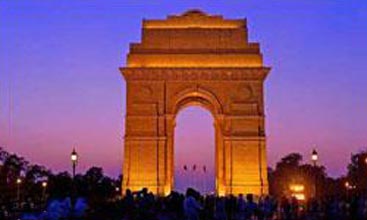
Begin by exploring the Moghul architectural splendor of Old Delhi reflected in its many historical monuments like the red sandstone edifice - Red Fort and the grand Jama Masjid. New Delhi is a complete contrast with its colonial structures and tree - lined wide avenues. Visit the beautiful Akshardham temple and the silent abode - the Lotus shaped Bahai temple.
Drive to Agra to the ethereal Taj Mahal ,a poem of love in white marble built by Moghul emperor Shah Jahan in memory of his wife, Mumtaj Mahal. Its perfect symmetry, exquisite craftsmanship, and elegance will leave you speechless.
Discover the colors of Rajasthan in the aptly named Pink City - Jaipur, studded with massive hilltop forts, mesmerizing palatial residences, and bustling colorful bazaars selling everything from jewelry, leather handicrafts, blue pottery to textiles. Visit the Amber fort for a fantastic view of the city and marvel at the historical artifacts at the sprawling City palace.
Company representatives will receive you on arrival at the international airport in Delhi. Transfer to your hotel. Relax.
DELHI, the capital of kingdoms and empires is now a sprawling metropolis with a fascinating blend of the past and the present. It is a perfect introduction to the composite culture of an ancient land. A window to the kaleidoscope - that is India.
Overnight will be at Delhi.
Enjoy a guided tour of Old Delhi after breakfast.
The tour will begin with a visit to Raj Ghat, a simple memorial to Mahatma Gandhi. He is also famously known as the "father of the nation".
One of the most important buildings of Old Delhi is the RED FORT. The magnificent Red Fort was built during the years 1638 - 48 when the Moghul Empire was at its peak. In 1638 Shahjahan transferred his capital from Agra to Delhi and laid the foundations of Shahjahanabad, the seventh city of Delhi. It is enclosed by a rubble stonewall, with bastions, gates and wickets at intervals. Of its fourteen gates, the important ones are the Mori, Lahori, Ajmeri, Turkman, Kashmiri and Delhi gates, some of which have already been demolished. His famous citadel, the Lal-Qila, or the Red Fort, lying at the town's northern end on the right bank or the Yamuna and south of Salimgarh, was begun in 1639 and completed after nine years. The Red Fort is different from the Agra fort and is better planned, because at its back lies the experience gained by Shahjahan at Agra, and because it was the work of one hand. It is an irregular octagon, with two long sides on the east and west, and with two main gates, one on the west and the other on the south, called Lahori and Delhi gates respectively. While the walls, gates and a few other structures in the fort are constructed of red sandstone, marble has been largely used in the palaces.
Continue your tour to Jama Masjid by bicycle rickshaws, one of Asia's largest mosques. People stream in and out of the mosque continuously and the presence of a nearby bazaar means that the area is rarely quiet.
Enjoy the rickshaw ride at Old Delhi peddling through the narrow by lanes of Chandani Chowk.
After lunch proceed for a sightseeing tour of New Delhi, which reflects the legacy of the British left behind. The division between New and Old Delhi is the division between the capitals of the British and the Mughals respectively. The division in the walled city and New Delhi also marks the division in the life-styles. The walled city is all tradition where one will be able to glean a past life-style in all its facets, colors and spells. New Delhi in contrast, is a city trying to live up to the best of 21st century standards.
Imperial Delhi will include the Qutub Minar, the tallest stone tower in India. Qutb-Minar in red and buff standstone is the highest tower in India. It has a diameter of 14.32 m at the base and about 2.75 m on the top with a height of 72.5 m. Qutbu'd-Din Aibak laid the foundation of Minar in AD 1199 for the use of the mu'azzin (crier) to give calls for prayer and raised the first floor, to which were added three more floors by his successor and son-in-law, Shamsu'd-Din Iltutmish (AD 1211-36). All the storeys are surrounded by a projected balcony encircling the minar and supported by stone brackets, which are decorated with honeycomb design, more conspicuously in the first floor.
Next stop would be the majestic Humayun's Tomb. Humayun died in 1556, and his widow Hamida Banu Begum, also known as Haji Begum, commenced the construction of his tomb in 1569, fourteen years after his death. It is the first distinct example of proper Mughal style, which was inspired by Persian architecture. It is well known that Humayun picked up the principles of Persian architecture during his exile, and he himself is likely to have planned the tomb, although there is no record to that effect.
The tour also includes a drive past the imposing India Gate, the Parliament building and the Rastrapathi Bhawan, the President's residence.
If time permits then visit the Lotus temple located in south of Delhi. It is lotus shaped and has rightly been given the name. It is made of marble, cement, dolomite and sand. It is open to all faiths and is an ideal place for meditation and obtaining peace and tranquillity. Its founder, Bahaullah (1817-1892), is regarded by Bahai as the most recent in the line of Messengers of God that stretches back beyond recorded time and that includes Abraham, Moses, Buddha, Zoroaster, Christ and Muhammad.
We could even have time to see the Indira Gandhi Museum or else Lotus Temple can be replaced with the museum visit. The history of the Gandhi family is well documented in this old building which was the last residence of Mrs Gandhi.
Overnight will be at Delhi.
Start for Agra early in the morning after breakfast. Reach and check in at hotel.
AGRA: Two great Mughal monarchs, Akbar and Shah Jahan, transformed the little village of Agra into a befitting second capital of the Mughal Empire - giving it the name Dar-ul-Khilafat {seat of the Emperor}. Today a visitor to Agra is caught up in a world of contrasting edifices, of red sandstone and white marble, narrow galleys and quaint buggies, and that irresistible charm that this favorite city of the Mughals still retains. It is not surprising, that modern Agra still reflects its Mughal heritage most conspicuously. A walk down the narrow bustling streets of the city will introduce the visitor to the wafting aroma of Mughlai cuisine.
Visit Sikandra.
SIKANDRA - This beautifully maintained monument is where EMPEROR AKBAR was buried. It is a very low profile monument but it has one of the most awe - inspiring tombs. It is surreal how one of the greatest emperors has been put to rest. The manicured lawns has spotted and other varieties of deer roaming in them.
Overnight stay will be at Hotel.
Breakfast will be at Hotel. Proceed for sightseeing.
Proceed for day sightseeing of Agra.
TAJ MAHAL - Little needs to be said about this architectural wonder which is always the soul raison-de-etre for every tourist's visit to Agra. Built by Shah Jahan, the Taj is a white marble memorial to his beautiful wife Mumtaz Mahal. This monument took 22 years to be completed and was designed, and planned by Persian architect Ustad Isa. Apart from its stunning design balance and perfect symmetry, the Taj is also noted particularly for its elegant domes, intricately carved screens and some of the best inlay work ever seen.
SIKANDRA - This beautifully maintained monument is where EMPEROR AKBAR was buried. It is a very low profile monument but it has one of the most awe - inspiring tombs. It is surreal how one of the greatest emperors has been put to rest. The manicured lawns has spotted and other varieties of deer roaming in them. Named after the Afghan ruler Sikander Lodi, Sikandra is the final resting place of Emperor Akbar. The Emperor began the construction of his own garden mausoleum during his lifetime. However, the construction was completed by his son Jahangir in 1613. An impressive marble - inlaid gateway leads to the spacious four - tiered monument which is crowned by a white marble cenotaph and screen. What is interesting is that the structure imbibes the best of Hindu, Christian, Islamic, Buddhist, Jain motifs, signifying thenew religion started by Akbar - the DEEN E ILAHI.
AGRA FORT -The red sandstone structure is surrounded by chahar-bagh, a four-square formal garden. Built by the famed Mughal emperor Akbar in 1565 AD, the fort is predominantly of red sandstone. Ensconced within is the picture perfect Pearl Mosque, which is a major tourist attraction. It lies on the bend of the river Yamuna, almost in the heart of the town. Akbar built it as his citadel over the years 1563-73 in the finest architectural style. It has imposing gates and walls of red sandstone and a moat.
After Agra Fort we will visit to BABY TAJ or the ITMAD-UD-ULLAH - The interiors of which are considered better than the Taj. One of the most beautiful Mughal tombs, Itmad-Ud-Daulah's Tomb was built by Nur Jahan, the Empress of Jehangir for her father in 1628. The tomb is a resting place of the powerful personality in Mughal Court, Itmad-Ud-Daulah, whose life is very interesting. Formerly a very poor Persian merchant then named Mirza Ghiyas or Ghiyas Beg he became a minister and a trusted treasure in Akbar's court. After Akbar's death in 1605, his son Jahangir rose into power. Jahangir made Ghiyas Beg his chief minister and honored him with the title of Itmad-Ud-Daulah, the Pillar of State. Later, Jahangir met a beautiful daughter of Ghiyas Beg named Mehr-Un-Nissa and married her. Mehr-Un-Nissa soon played a significant role in the Jahangir's court and was called Nur Mahal, the light pf the Place. Owing to her influence, her father and brother were granted with privileges in the court. When Ghiyas beg (Itmad-Un-Daulah) dies in 1622, Nur Mahal decided to build a mausoleum for him. Queen Mumtaz Mahal or the lady of the Taj was also from this prevailing family. The mausoleum is entirely made of white marble and graced with intricate decoration of inlay work, and marble-screen work belonging to the Islamic style. With its tranquil, small garden on the bank of Yamuna River, the tomb stands impressively elegant from a distance.
Overnight will be at Agra.
Breakfast will be at Hotel.
Proceed to Jaipur en-routing Fatehpur Sikri and Abhaneri.
Fatehpur Sikri: Fatehpur Sikri is 37 km west of Agra. JALAL - UD - DIN - MUHAMMAD AKBAR named Akbar, Humanyun's son, accessed the throne at the tender age of 14. While hunting around Sikri his curiosity was aroused by the songs of some minstrels about the celebrated Khwaja -Mu'inu'd-din Chisti, the founder of the Chisti order of SUFIS. Akbar, who was without a male heir heard about Saint Salim Chisti and visited him in the year 1568, the saint blessed him with 3 sons and in gratitude Akbar ordered the great mosque of Fatehpur Sikri, built under his supervision. As a mark of respect to the saint, Akbar shifted his capital to Fatehpur Sikri and built various secular buildings like the Diwan -I-Am, Diwan-I-Khas, Jodhabai palace, Birbal's house, Marian's house and the Panchmahal.
Abhaneri Village: Abhaneri Village is situated on the Jaipur/Agra Highway (NH 11) near Sikandra in Dausa District. It is an ancient village in Rajasthan famous for its post Gupta or early medieval monuments. The sculpture and architecture of Abhaneri suggests that it must have been a great center of art and architecture. The sculptures of Abhaneri are the best example of Gurjar Pratihari art. This flourishing town has ruined by the Mughal Emperor Mahmud Ghaznavi in one of his invasions. The village has contributed numerous pieces of sculpture to various museums worldwide. The name of the village Abhaneri is so called because the local Goddess Harshat Mata is shown portrayed in a joyous mood and spreads brightness or Abha all around. The village's original name was Abha Nagri. The village is said to have been founded by the legendary King Raja Chand and thus the village could be over three thousand years old. It is; however, felt that the mythological Raja Chand could be King Bhoja, who ruled Gurjar Kingdom in the ninth century AD.
Harshat Mata Temple: The Harshat Mata Temple dates back to the tenth century AD. Daily worship is offered to the deity in the temple. The ruins of the temple conform to 10th century architectural and sculptural styles. All walls & surroundings around the Temple were of carved stone depicting the abodes of Gods & Goddesses Aradhnarishwar, Nag-Nagin, Prem Mudrakan, Natraj, Lord Vishnu & Budhas. This Temple which was looted and destroyed by the Mughals is in ruins and pieces of sculpture showing a fine degree of craftsmanship lie strewn around. The Archaeological Survey of India is trying to restore the Temple. Annual fair is held in the Hindu month of chaitra (March/April) in honour of Goddess Harshat Mata which lasts three days and numerous devotees and merchants gather from neighbouring villages. The statue of Harshat Mata originally was of blue sapphire.
Chand Baori: Chand Baori is about 100 feet deep open well with flights of steps on three sides is another 10th century monument. The stairs of the Chand Baori are in the shape of an inverted English letter "V" in sets of 4-5 steps. This Baori is not an ordinary structure, but is a marvel of Architecture. The Chand Baori has beautiful carved panels inserted into the sides. No body has been able to count the steps. One can see the two royal toilets with carved windows and Jharokhas, which were used by the then Kings & Queens. The water for the royal toilets was used to be pulled from the Baori with the help of bulls. The carved stone pillars, which have now been damaged, were once strong enough for supporting pulleys to draw water. One can also witness all 24 Avtars of Lord Vishnu which were carved on the stone inside one of the cenotaph. There are three tunnels which have opening of about 20 Kms away from Chand Baori, were being used by the rulers as escape routes in case of attack by the enemies. An encyclopedia of stone architecture showing a fine degree of craftsmanship lies strewn all around the village. In fact, Chand Baori is a unique example of its own kind of stone architecture where one can see the ladies figures with various kinds of musical instruments and the dancing posses.
There is a resort as well where we can organize lunch for our guests by company or on direct payment basis. We recently had a group visited this place in the month of March and they have given us a very good feedback.
Continue your drive to Jaipur.
Jaipur: Jaipur is the capital of the state of Rajasthan a romantic realm of resplendent palaces, mighty fortresses and regal Maharajahs that lies in the western deserts and is an utterly unique part of India. Proudly belonging to the KSHATRIYA warrior caste and fiercely independent, the Rajput princes made fearsome foes. However, many of them realized that to maintain their wealth and authority locally, it was expedient to proclaim allegiance to the central power. Thus, many enjoyed a privileged position under the Mughal emperors and also the British Raj that followed.
The bustling Rajasthan capital of Jaipur takes its name from its venerated founder Jai Singh II, who was given the title Sawai Maharaja by the Mughal. Literally translated this would mean 'one and a quarter', suggesting that the Mughal thought this emperor to be more valuable than just 'one'. Jaipur is known as the 'Pink City' on account of the distinctive colour of its buildings. This did not, however, form part of the original plan, but dates back to 1856, when the city was given a wash of pink in honor of a State Visit from Prince Albert.
This evening, visit the Birla Temple to learn more about the fascinating religious life of Jaipur. The marble structure, built as recently as 1985, houses ornate statues including one of Lakshmi (goddess of Wealth and Beauty) and Narayan dressed in gaudy robes, representing a Hindu vision of heavenly luxury. Carvings in the temple and on pillars supporting the covered walkways include images of the Hindu pantheon, as well as Jesus, the Blessed Virgin Mary and St Francis of Assisi. Your visit will coincide with the AARTI Ceremony, which involves oil lamps being lit and waved, in order to awake and invoke the deity. Enjoy the experience and spend night at Jaipur.
Overnight will be in Jaipur.
Proceed for a morning excursion to Amber Fort after breakfast. Elephant ride ascent to the fort.
AMBER FORT PALACE - Amber is the classic romantic Rajasthani fort palace. Its construction was started by Man Singh I in 1592, and completed by his descendent Jai Singh I. Its forbidding exterior belies an inner paradise where a beautiful fusion of Mughal and Hindu styles finds its ultimate expression. At the foot of the hill you will mount your caparisoned elephant for the slow but steady climb up to the main gate, making your entrance in the time honoured fashion. The Fort, completed in the early 18th century, took over 100 years to build and now, although deserted, offers a fascinating insight into the lifestyle of the Moghul ruling families.
Continue sightseeing tour of Jaipur.
CITY PALACE - A delightful blend of Mughal and traditional Rajasthani architecture, the City Palace sprawls over one-seventh of the area in the walled city. It houses the Chandra Mahal, Shri Govind Dev Temple and the City Palace Museum.
JANTAR MANTAR - This is the largest and the best preserved of the five observatories built by Jai Singh II in different parts of the country. This observatory consisting of outsized astronomical instruments is still in use.
HAWA MAHAL - The ornamental facade of this "Palace of Winds" is a prominent landmark in Jaipur. It is a five-storey structure of sandstone plastered pink encrusted with fine trelliswork and elaborate balconies. The palace has 953 niches and windows. Built in 1799 by Pratap Singh, the Mahal was a royal grandstand for the palace women.
This afternoon is free for you to relax, shop or explore independently. Shopping is superb in Jaipur, particularly for gold and silver jewellery, pottery, tie-dye materials, silk, saris, wooden handicrafts and carpets.
Overnight will be at Jaipur.
fter leisurely breakfast proceed to Delhi. Reach and enjoy some last minute shopping.
Later enjoy the Farewell Dinner. Proceed to the airport for flight with sweet memories of India.
9W Special Privileges:
9W Hospitality Pvt. Ltd. is the vision of highly passionate hospitality professionals, led by a team of skilled financial analysts, tour operators and experienced hoteliers. We own and operate our own restaurants pan India, own and run franchise for popular brands. With years of research, strategic analysis and looking in the future of inbound tourism in our country, we expanded our business to offer services as a destination management company. Due to detailed foreign market research, closely monitoring needs of foreign travelers, identifying international markets, we successfully managed to build a loyal customer base in the span of a few years. Read More...

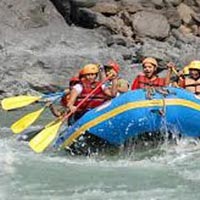 3D/2N
3D/2N
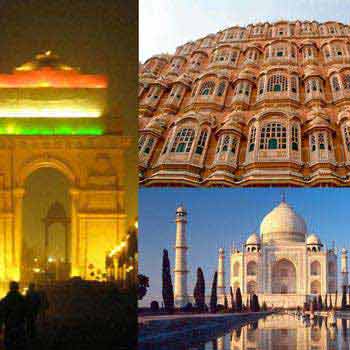 6D/5N
6D/5N
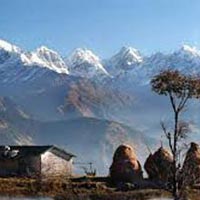 5D/4N
5D/4N
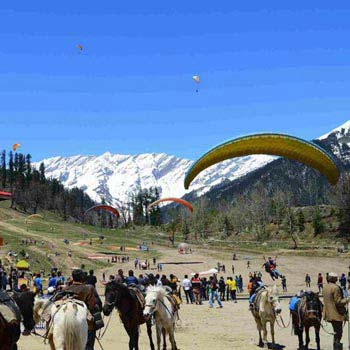 4D/3N
4D/3N
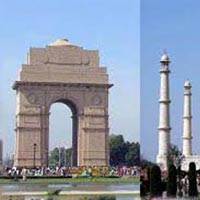 4D/3N
4D/3N
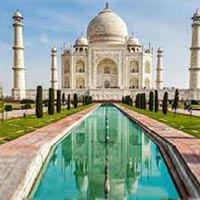 4D/3N
4D/3N
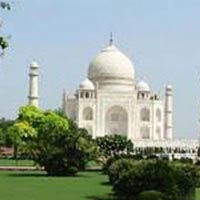 4D/3N
4D/3N
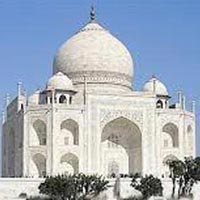 7D/6N
7D/6N
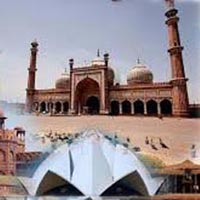 7D/6N
7D/6N
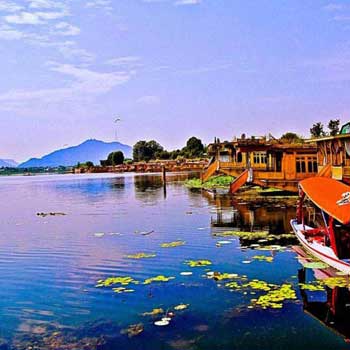 7D/6N
7D/6N
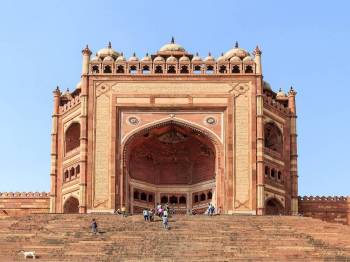 7D/6N
7D/6N
Amritsar Chandigarh Delhi Agra Family Pa..
New Delhi - Agra - Vrindavan - Mathura - Amritsar
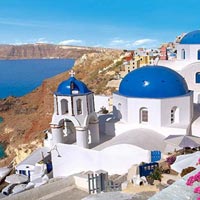 7D/6N
7D/6N
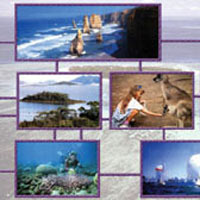 7D/6N
7D/6N
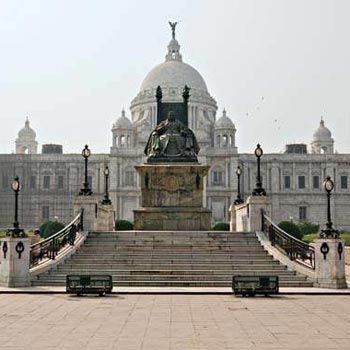 7D/6N
7D/6N
Golden Triangle - East India Tour
Kolkata - Puri - Imphal - Agartala - Dimapur
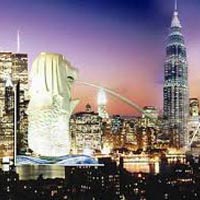 7D/6N
7D/6N
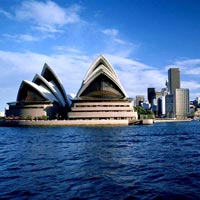 7D/6N
7D/6N
 7D/6N
7D/6N
 7D/6N
7D/6N
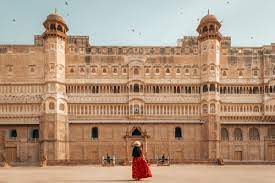 13D/12N
13D/12N
Rajasthan Tour Package 12 Night - 13 Days
Ajmer - Bikaner - Jaipur - Jaisalmer - Jodhpur - Mount Abu - Pushkar - Udaipur
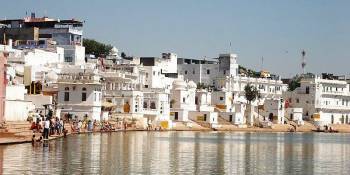 13D/12N
13D/12N
12 Nights Rajasthan Package From Jaipur
Ajmer - Bikaner - Jaipur - Jaisalmer - Jodhpur - Mount Abu - Pushkar - Udaipur
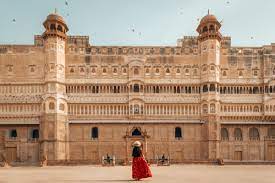 13D/12N
13D/12N
Rajasthan Tour Package 12 Night - 13 Days
Ajmer - Bikaner - Jaipur - Jaisalmer - Jodhpur - Mount Abu - Pushkar - Udaipur
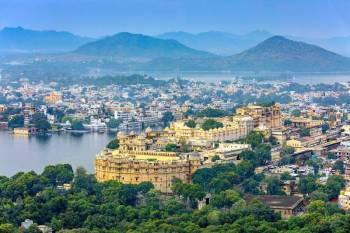 12D/11N
12D/11N
11 Nights 12 Days - Delhi Agra Rajasthan
New Delhi - Mathura - Agra - Jaipur - Ajmer - Pushkar - Udaipur - Mount Abu - Ranak..
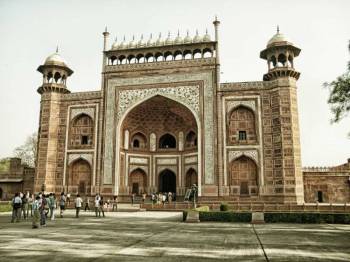 11D/10N
11D/10N
10 Nights Uttar Pradesh Tour Package Fro..
New Delhi - Agra - Prayagraj - Lucknow - Mathura - Varanasi - Ayodhya - Vrindavan -..
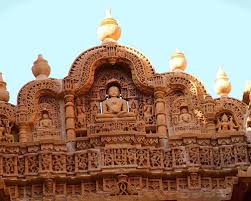 10D/9N
10D/9N
9 Night - 10 Days Rajasthan Tour Package
Ajmer - Jaipur - Jaisalmer - Jodhpur - Mount Abu - Udaipur
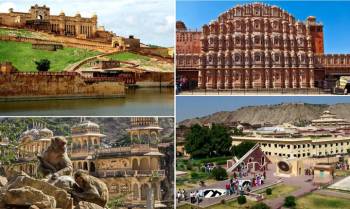 10D/9N
10D/9N
Ajmer - Udaipur - Mount Abu - Jodhpur - ..
Ajmer - Jaisalmer - Jodhpur - Mount Abu - Udaipur - Jaipur
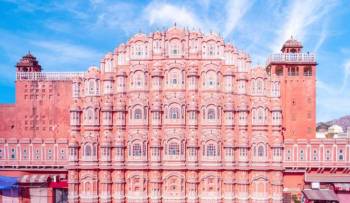 9D/8N
9D/8N
9 Days Jaipur - Ajmer - Udaipur - Mount ..
Ajmer - Jaipur - Jaisalmer - Jodhpur - Mount Abu - Udaipur
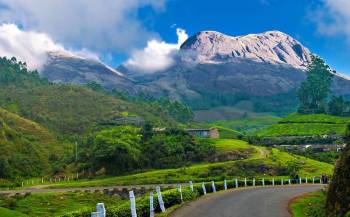 4D/3N
4D/3N